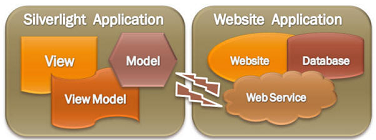Michael Washington created an end-to-end example that
Creates,
Reads,
Updates, and
Deletes records from a database, implements forms based security, "granular security" and View Model style.
Silverlight is different because it communicates with the website that launches it using asynchronous communication. Learning how to design applications this way can be a bit challenging.
